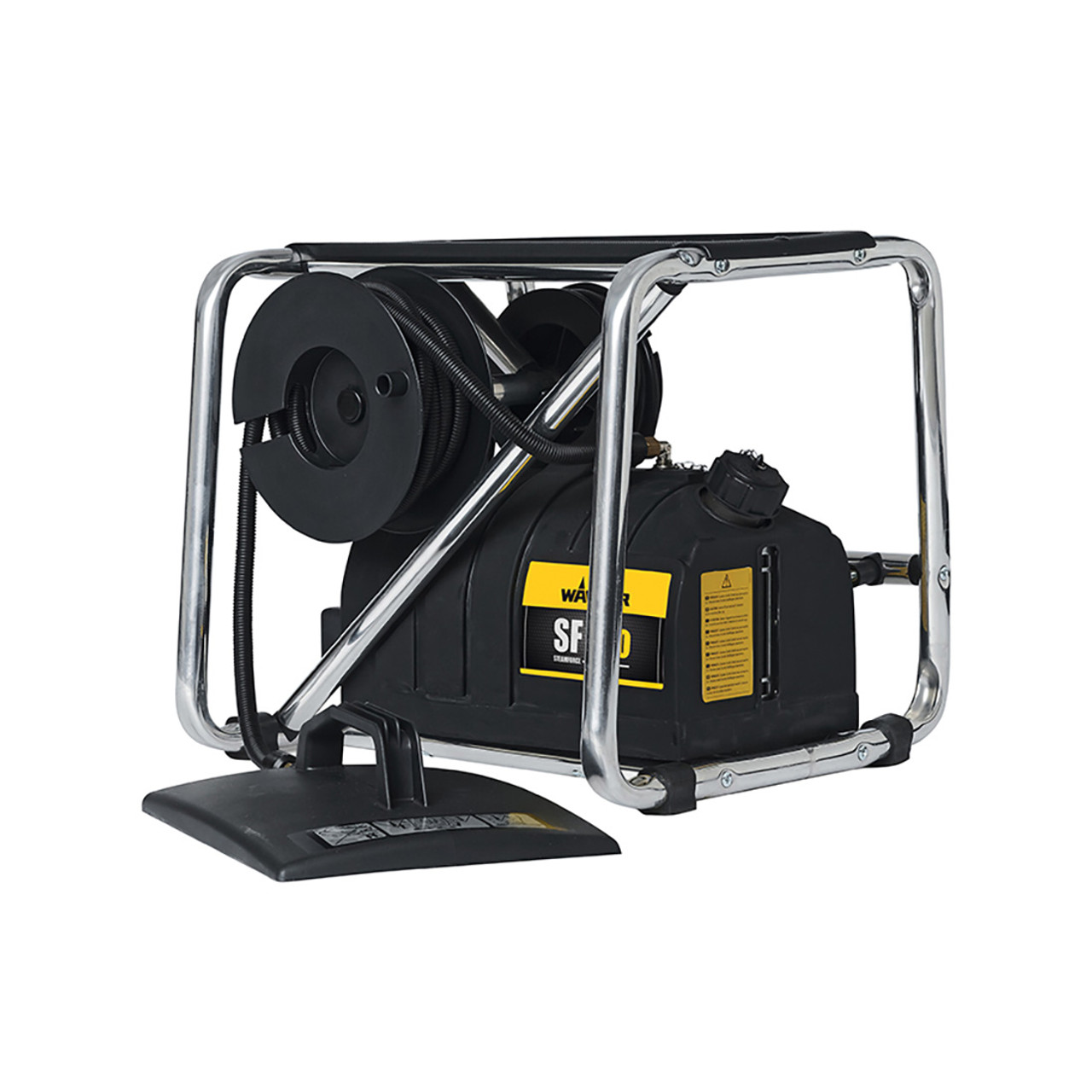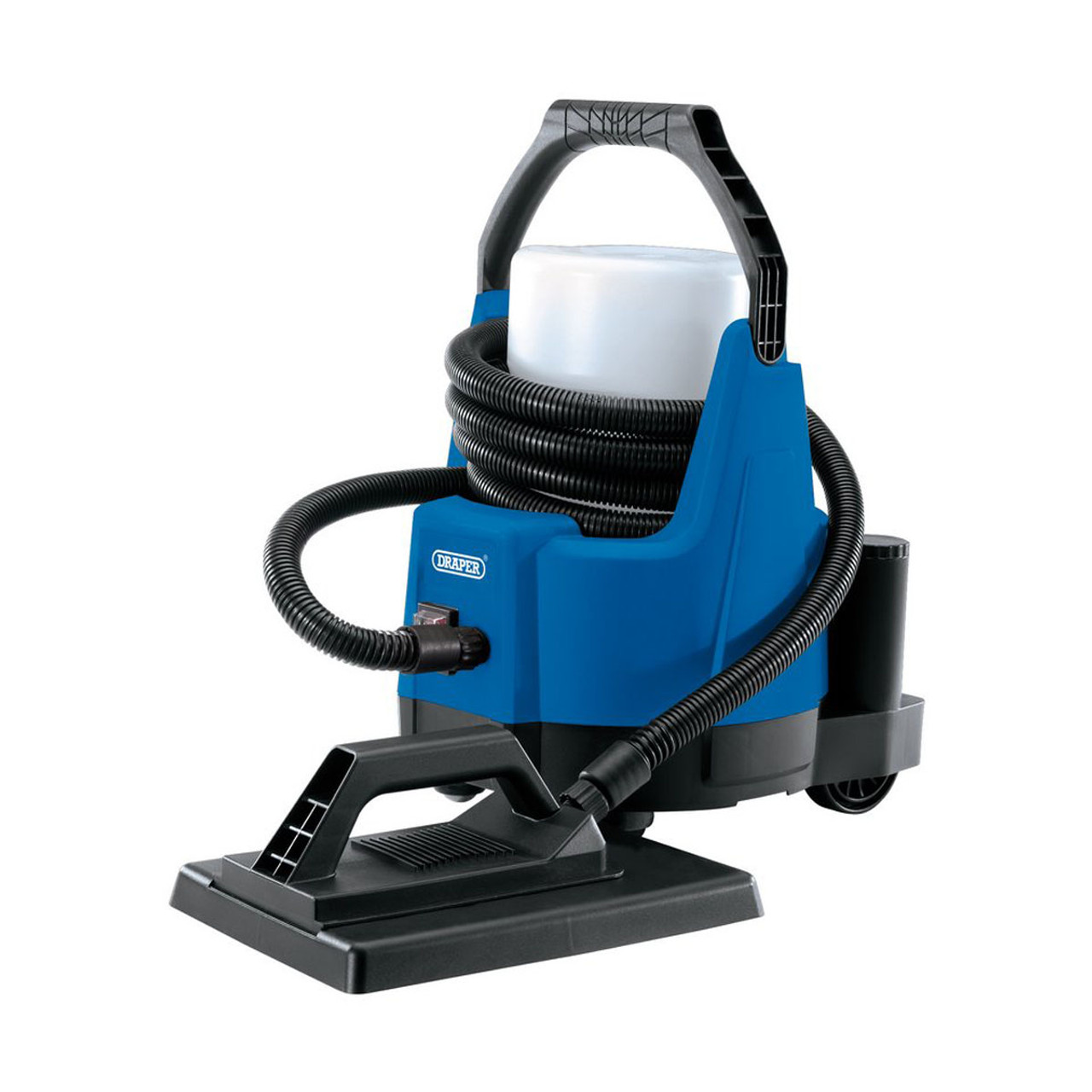10 Key Factors When Choosing the Right Wallpaper Steamer

Making an informed decision when choosing a wallpaper steamer requires careful consideration of several important aspects. A wallpaper steamer, also called wallpaper strippers is a necessary appliance made to make the sometimes difficult wallpaper removal process easier. This device works by creating and applying steam to the wallpaper, which efficiently loosens the glue and improves the efficiency of the removal procedure. Wallpaper steamers are generally easy to operate and multipurpose, with a water reservoir and a steaming plate or attachment. Steam is produced by heating water in the reservoir and poured onto the wallpaper to soften it for easier removal. In addition to the ability to work in reasonable parts, some versions provide extra capabilities like numerous attachments for different types of wallpaper or perforating tools. Because wallpaper steamers work so well, they save a lot of time and effort when removing wallpaper, which makes them an excellent investment for both experts and DIY enthusiasts.
How do wallpaper steamers work?
Wallpaper steamers operate through a straightforward process of applying the power of steam to simplify the removal of wallpaper. These devices consist of a water reservoir connected to a heating element that transforms water into steam. The generated steam is then directed onto the wallpaper using a flat plate or attachment. As the steam permeates the wallpaper, it effectively softens the adhesive, making the wallpaper pliable and easy to peel off without causing damage to the underlying wall surface. Users can work in sections, repeating the process as needed for thorough removal.
- Water Reservoir and Heating Element
Wallpaper steamers include a reservoir for water and a heating element that converts the water into steam. - Application of Steam
The generated steam is directed onto the wallpaper through a flat plate or attachment, saturating the wallpaper with moisture. - Softening Adhesive
The heat and moisture from the steam penetrate the wallpaper, softening the adhesive and making it easier to peel off. - Peeling Off Wallpaper
Once the adhesive is sufficiently softened, users can gently peel off the wallpaper using a putty knife or scraper.
Which wallpaper steamer is the best?
Choosing the right wallpaper steamer for you depends on your specific needs and the requirements of your wallpaper-type removal project. Different wallpaper steamers come with various features, capacities, and capabilities, so it’s crucial to consider your individual circumstances. By carefully assessing your specific needs and the characteristics of your wallpaper removal project, you can choose a wallpaper steamer that aligns with your requirements and makes the process more efficient and effective. I will leave here some types of wallpaper and their needs when removed.
- Vinyl Wallpaper
Durable and waterproof. Requires a steamer with higher wattage for effective penetration. - Generally porous
Use a moderately powered steamer to prevent damage. - Textured Wallpaper
It may need extra attention. Use a steamer with various attachments for better penetration. - Multiple Layers
Choose a powerful steamer with high steam output. - Peel and Stick Wallpaper
Generally easier to remove. A steamer may help with adhesive residue if needed. - Grasscloth or Natural Fibre
Requires extra care. Use a steamer with adjustable settings to prevent damage.
Key Factors when Choosing a Wallpaper Steamer
- Project Size and Frequency
Evaluate the size of your wallpaper removal project. For larger or more frequent projects, consider a wallpaper steamer with a larger water reservoir and higher wattage for efficient and continuous operation. - Wallpaper Type and Adhesive
Different wallpapers and adhesives may require specific steamers. Ensure that the steamer you choose is suitable for the type of wallpaper you’re dealing with, whether it’s vinyl, textured, or another material. - Easy to Use and Portability
Look for a wallpaper steamer that is user-friendly and suits your level of experience. Consider features such as easy controls, a comfortable handle, and a design that makes assembly and operation straightforward. If you need to move the steamer frequently between rooms or work in different locations, a portable and lightweight model with a long, flexible hose can be advantageous. - Capacity and Runtime
Consider the water tank capacity and the steamer’s runtime. A larger tank means less frequent refills, while a longer runtime ensures you can tackle larger wallpaper removal projects without interruptions. - Room Conditions
If you’re working in a bathroom or a space with high humidity, choose a steamer that can handle moisture well. Some models are designed to be more resistant to humid conditions. - Budget and Value
Consider your budget and balance it against the features offered by different steamers. Sometimes a slightly higher investment in a quality steamer can save time and frustration in the long run. - Attachments and Accessories
Assess whether additional attachments or accessories are necessary for your project. Certain steamers come with various tools that can be useful for different types of wallpaper or specific tasks. - Steam Plate Size
The size of the steam plate or nozzle matters. A larger plate can cover more surface area, making the wallpaper removal process more efficient. Ensure it’s suitable for the size of the walls you’re working on. - Time Constraints
If time is a crucial factor, consider a steamer with quick heating and efficient steam output to expedite the wallpaper removal process. - Brand Reputation and Reviews
Research the reputation of the brand and read customer reviews to get an idea of the steamer’s performance, durability, and overall customer satisfaction. This information can help you make an informed decision based on real user experiences.
Our Top Picks for Wallpaper Steamers
Wagner WAG2351897 SteamForce Pro Wallpaper Steamer 2750W 240V
The Wagner SteamForce Pro Wallpaper Steamer is hard-wearing and durable. The powerful motor produces lots of steam, meaning it can penetrate through several layers of wallpaper at once. Suitable for removing all wallpaper types, including multi-layered, painted and Artex, using steam.
The roll cage features a unique patented built-in step that provides a strong working platform. It has an extra large anodised water tank that can hold up to 7.5 litres of water for up to 90 minutes of steam time. It also includes a 5m long steam hose for a large working range.
Draper 58328 Quick Steam Wallpaper Steamer 1500W 240V
Offers approximately 60 minutes of usage, facilitated by a 3-metre ‘cool-to-touch’ steam hose. Its wheeled base ensures easy transportation, while integral tool storage keeps accessories organised. The device is equipped with a 2-in-1 steam plate for diverse cleaning applications. Additionally, its 2-metre cable with a BS plug provides ample reach and compatibility. Ideal for efficient and convenient cleaning, this steam cleaner combines practical features with a user-friendly design.
Black & Decker KX3300T Wallpaper Stripper 2300W 240V
sed for removing wallpaper from walls and other flat surfaces. The steam pad is held over the area of the paper to be removed. Once softened, the paper can be easily scraped away with a conventional stripping tool. Safety features include a pressure release valve incorporated in the body and a thermal cut-out device which will operate should the unit boil dry.
FAQ
Can wallpaper steamers overheat?
Yes, wallpaper steamers can overheat if used improperly or if they operate without water in the tank. It is crucial to follow the manufacturer’s instructions, avoid running the steamer dry, use the recommended water type, and perform regular maintenance to prevent overheating and potential damage to the unit.
Will a wallpaper steamer remove paint from plaster?
A wallpaper steamer is primarily designed for removing wallpaper, it may not be the best tool for removing paint from plaster. The steam generated by the wallpaper steamer is intended to loosen wallpaper adhesive, and it may not be as effective at softening and removing paint. To remove paint from plaster, it’s often more appropriate to use a paint stripper or a chemical paint removal solution. These products are specifically formulated to break down and lift layers of paint, making the removal process more efficient. However, it’s essential to follow safety precautions and use appropriate protective gear when working with chemical paint strippers.
Can a wallpaper steamer damage my walls?
When used correctly, a wallpaper steamer is generally safe for walls and shouldn’t cause damage. However, it’s crucial to follow proper usage guidelines.
- Wall Surface Compatibility: Ensure that the wallpaper steamer is used on surfaces that can withstand moisture and heat, such as drywall or plaster. Avoid using excessive steam on delicate materials.
- Follow Manufacturer’s Instructions: Adhere strictly to the manufacturer’s instructions and guidelines for the wallpaper steamer. This includes proper usage, recommended steam settings, and any specific precautions outlined for your particular model.
- Test in a Small Area: Before tackling a large section of the wall, perform a test in a small, inconspicuous area. This helps ensure that the wallpaper steamer doesn’t adversely affect the wall surface.
- Avoid Prolonged Exposure: Minimise prolonged exposure of steam to one area. Excessive steam or prolonged exposure could potentially affect the paint or wall surface, so keep the steamer moving.
- Use the Right Tools for Painted Surfaces: If you’re dealing with painted walls, especially if the paint is lead-based, consider alternative methods like chemical paint strippers, as a wallpaper steamer is primarily designed for wallpaper removal.
At Toolden, we offer a wide range of Wallpaper Steamers to suit a wide range of domestic and commercial applications.
Unsure of which Wallpaper Steamer to go for? Need a bit of help with your order? Our new help centre has a wide range of helpful articles and guides!



